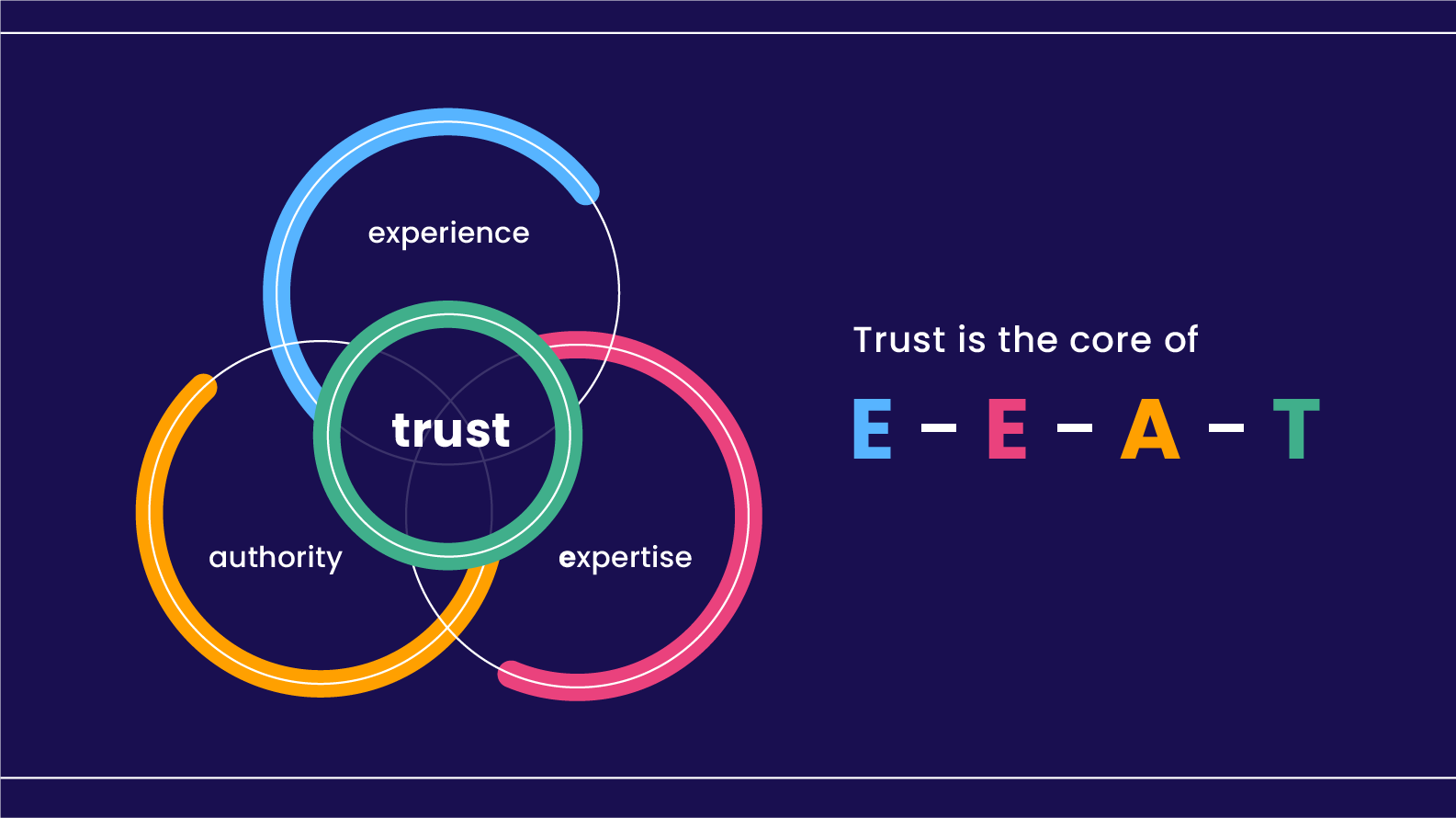If you are struggling with your SEO results right now, believe us: you are not alone.
The search landscape has been thrown into a state of complete turmoil, and brands are feeling the effects. SERP volatility is running rampant amid the converging impacts of AI, algorithm updates and changing user behaviors.
As a result, many publishers have seen long-held SEO rankings disappear, and have encountered new levels of difficulty showing up on page one for searches they might have easily won in the past.
This has real business consequences. Share of search correlates to share of market. If your brand is not showing up when potential customers are searching for topics and pain points that relate to your solutions, it can be a dire indicator for your growth outlook and competitive position.
Worry not! At TopRank Marketing, we help clients navigate the evolving challenges of SEO on a daily basis. Here’s a rundown of some of the most commonly observed root causes behind these negative trends, and how we’re advising clients to adapt and thrive.
What’s happening: AI Overviews and SERP features crowding out organic listings.
It’s one of the most disruptive trends in search and everyone is feeling the effects. Research from Advanced Web Ranking found that AI Overviews are appearing in about 12% of search results and are pushing organic listings down the page by an average of more than 900 pixels. Meanwhile, Featured Snippets show up in 17% of search engine results pages (SERPs), and in some cases — most often in the Health niche — both of these features appear.
All of this means that even if your brand is ranking highly in a given SERP, you still might find it considerably more difficult than before to earn a click-through. Studies show that CTR drops have been pervasive in this new environment.

(Source: Seer Interactive)
If you’re noticing this trend, it’s one sign that AI’s arrival in search is affecting your performance. Other indicators include: reduced time on site and increased bounce rates, shifts in traffic patterns for informational queries, or growing disparity between impressions and clicks.
What to do: Strategically adapt your approach to search visibility.
Our agency has been heavily focused on helping brands adapt their SEO strategies to account for this shift. Key actions include:
- Audit your AI search presence to understand where your brand shows up in AIOs, and identify key rankings impacted by AI responses.
- Assess vulnerabilities and opportunities, viewed through a lens of strategic prioritization.
- Develop a data-informed strategy with tailored approaches to visibility enhancement.
- Implement for short- and long-term success — adapt content formats and messaging to appeal to AI and human audiences alike
What’s happening: Not enough topical authority to become a distinguished information source.
One of the biggest changes in Google’s algorithm over the years has been more of a focus on the overall authority of a source, versus strictly evaluating a specific page. Search engines want to point their users to trustworthy resources, with a broader track record of focusing on the subject matter at hand.
As Semrush explains, “Topical authority builds confidence in your brand for readers and search engines alike. This leads to more returning site visitors and higher SERP rankings.”
On the flip side, a lack of topical authority — resulting from sparse breadth of coverage, low-quality content, or poor internal linking — can make it exceedingly difficult to break through in the rankings, even if the individual page you’ve created is really good.
If you find that your content is struggling to rank despite strong technical optimization, high-quality writing and relevant keywords, topical authority could be your culprit. Consider conducting competitive analysis to see if other sources are offering broader and deeper coverage of your high-priority topics.
What to do: Build content hubs with topical mapping to signal your areas of expertise.
The content hub model has become very popular in content marketing and it’s one that our agency champions. This strategic framework involves creating a central pillar page that covers a broad topic, then linking to a series of related, in-depth subpages (cluster content). The result is a cohesive structure that builds topical authority and improves SEO performance. We use topical mapping as a data-driven technique to identify keywords and subtopics.
What’s happening: Insufficient domain authority in a competitive niche.
Domain authority isn’t quite the same as topical authority, but both are critical to beating out competitors in search results. Domain authority measures your site’s reputation more holistically. It tends to be a bit more technical in nature, emphasizing factors such as backlink profile, age of the site, and security.
What to do: Audit your site to see where you can improve.
Running a technical SEO audit on your website can quickly surface a variety of issues that might be negatively impacting your domain authority. In many cases the fixes are relatively simple; you can prioritize those with the lowest lift and/or highest impact to start moving the needle right away.
What’s happening: Lack of alignment with search algorithms and E-E-A-T guidelines.
Both topical and domain authority play a role in influencing E-E-A-T, Google’s quality-rater guidelines that are designed to elevate people-first content. But the principles go well beyond these two criteria in assessing a website’s credibility and helpfulness.
Short for Experience, Expertise, Authoritativeness and Trustworthiness, E-E-A-T is about clearly demonstrating that your site’s content comes from real people who know what they’re talking about. Beyond in-depth topical coverage and technical SEO strength, you’ll want to ensure your content features bylines (with accompanying author bios), cites statistics and research with quality sourcing, and highlights real-life examples.

What to do: Make E-E-A-T central to your content planning and creation.
Optimizing around E-E-A-T guidelines is one of the most valuable things you can do to future-proof your brand’s SEO content strategy. Imbuing your content with these people-first qualities holds the key to both earning citations in generative AI summaries, and remaining an indispensable go-to resource beyond what AI can synthesize.
Conducting an E–E-A-T audit is a great first step in taking control of your website’s E-E-A-T destiny. This will quickly surface opportunities for improvement. From there, you can tailor your ongoing content strategy to emphasize E-E-A-T-friendly elements, such as original research, influencer contributions, employee thought leadership, and routine updates of timely content.
Test your website’s trust signals:
What’s happening: Keyword cannibalization and fragmentation.
This is something that can happen when keywords and content are not being inventoried and tracked effectively. Especially for companies with large libraries of legacy content, it’s often difficult to avoid accidentally creating duplicative content, but this can cause confusion for search engines and hurt rankings.
What to do: Inventory, prune, consolidate.
A content cleanup, informed by a comprehensive inventory and audit, will allow you to identify pages that are competing with one another for the same keyword, so you can take corrective action (e.g. removing one page or consolidating both). If your domain houses a high number of URLs — we work with plenty of clients hosting 1,000-plus — the content inventory and audit also surfaces those that aren’t providing value to you or your audience, so you can cull them out.
A clean and efficient content ecosystem makes your site easier for engines and users to navigate. And that means better rankings.
Let’s solve your top SEO challenges
If any of the above pain points sound familiar, we can help you find relief. And if you’re struggling to rank and drive SEO impact for other reasons, there’s a darn good chance we can help you with that too.
Explore our SEO services to see how we might plug into your strategy. Or, if you want to run a diagnostic and see where you should be focusing, click below to request a free SEO health check.
Pinpoint your opportunities:



